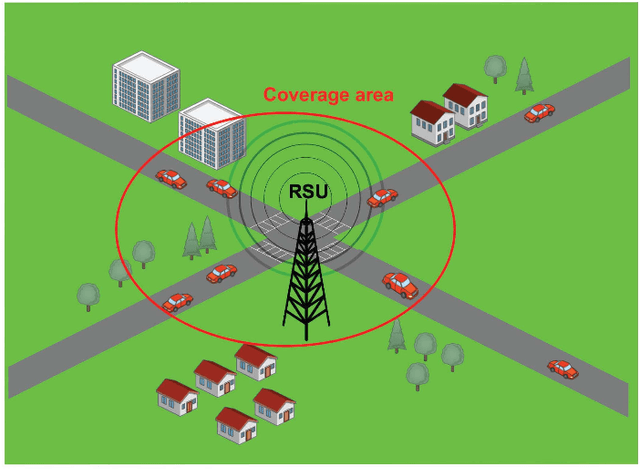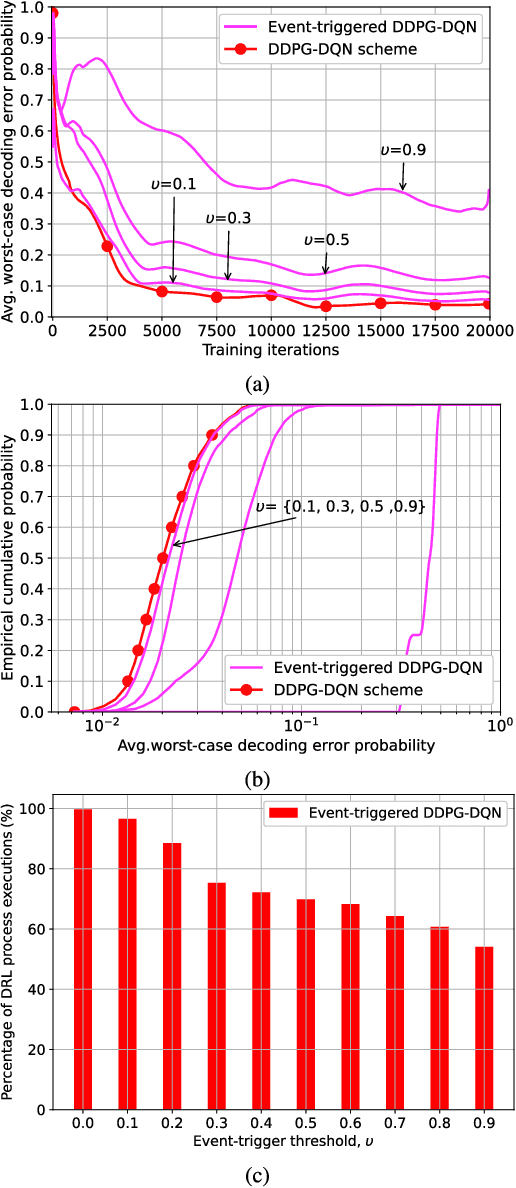Nasir Khan
Event-Triggered Reinforcement Learning Based Joint Resource Allocation for Ultra-Reliable Low-Latency V2X Communications
Jul 18, 2024



Abstract:Future 6G-enabled vehicular networks face the challenge of ensuring ultra-reliable low-latency communication (URLLC) for delivering safety-critical information in a timely manner. Existing resource allocation schemes for vehicle-to-everything (V2X) communication systems primarily rely on traditional optimization-based algorithms. However, these methods often fail to guarantee the strict reliability and latency requirements of URLLC applications in dynamic vehicular environments due to the high complexity and communication overhead of the solution methodologies. This paper proposes a novel deep reinforcement learning (DRL) based framework for the joint power and block length allocation to minimize the worst-case decoding-error probability in the finite block length (FBL) regime for a URLLC-based downlink V2X communication system. The problem is formulated as a non-convex mixed-integer nonlinear programming problem (MINLP). Initially, an algorithm grounded in optimization theory is developed based on deriving the joint convexity of the decoding error probability in the block length and transmit power variables within the region of interest. Subsequently, an efficient event-triggered DRL-based algorithm is proposed to solve the joint optimization problem. Incorporating event-triggered learning into the DRL framework enables assessing whether to initiate the DRL process, thereby reducing the number of DRL process executions while maintaining reasonable reliability performance. Simulation results demonstrate that the proposed event-triggered DRL scheme can achieve 95% of the performance of the joint optimization scheme while reducing the DRL executions by up to 24% for different network settings.
Says who? Automatic Text-Based Content Analysis of Television News
Aug 29, 2013



Abstract:We perform an automatic analysis of television news programs, based on the closed captions that accompany them. Specifically, we collect all the news broadcasted in over 140 television channels in the US during a period of six months. We start by segmenting, processing, and annotating the closed captions automatically. Next, we focus on the analysis of their linguistic style and on mentions of people using NLP methods. We present a series of key insights about news providers, people in the news, and we discuss the biases that can be uncovered by automatic means. These insights are contrasted by looking at the data from multiple points of view, including qualitative assessment.
 Add to Chrome
Add to Chrome Add to Firefox
Add to Firefox Add to Edge
Add to Edge